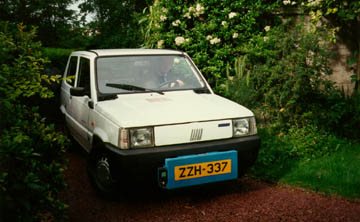
Last update: 1998-04-24 .
State of the Art
Conductive charging
Most present day work on the charging infrastructure for electric vehicles is oriented to conductive connection of the vehicle which implies the need for driver intervention.Adequate for the needs of the privately owned vehicle which can thus be charged on the street and at the home with the same onboard charger.
Not satisfactory for automatic rent-a-car systems, electric taxis, etc... due to driver intervention
Existing Inductive Systems
Automatic charging systems will rely on inductive power transfer through loosely coupled inductors. The present state of the art of inductive charging system shows two approaches which have led to industrial developments. None of these two however fully meets the specifications of the fully automatic charging system which is the subject of this proposal.
 Mains frequency systems
Mains frequency systems
50 Hz inductive chargers are available for industrial vehicle applications;
a mains frequency inductive charger for electric road vehicle has been
developed by VUB, DAVIS DERBY and CITELEC in the framework the TAUT-CT92-0006
contract (DG XII).
These devices have several interesting operational aspects (energy efficiency up to 90 %, high tolerances on alignment) but are characterised by a large size and weight (about 25 kg per inductor for a 3 kW unit) which compromises their installation on the vehicle.
High-Frequency Systems
Systems using high frequencies have been developed in the United States for power ranges up to 120 kW.These offer exceptional power transfer capability in a small and light unit, but they have to be manipulated by hand and cannot be fully automated.